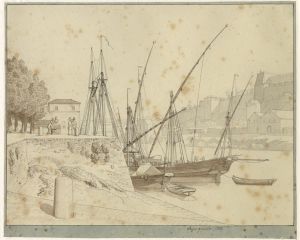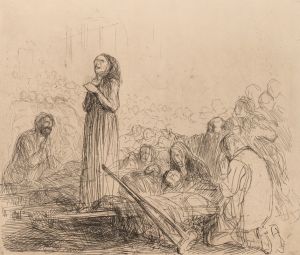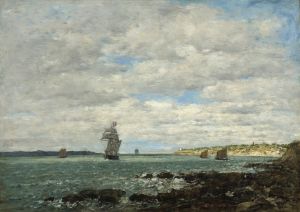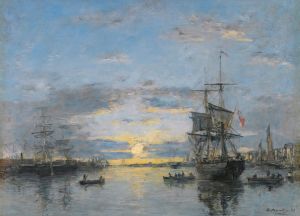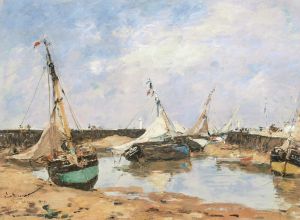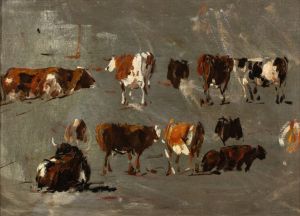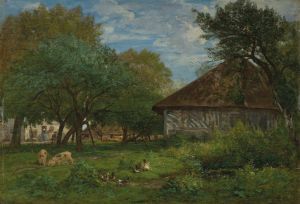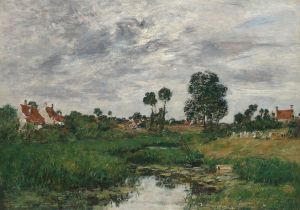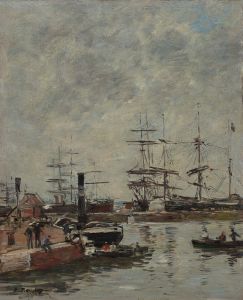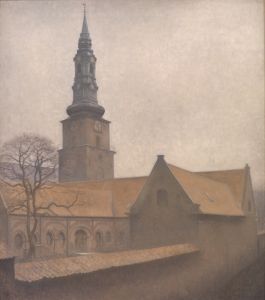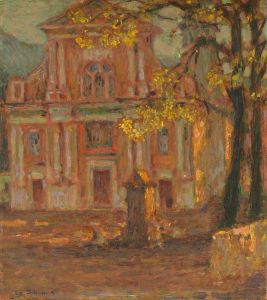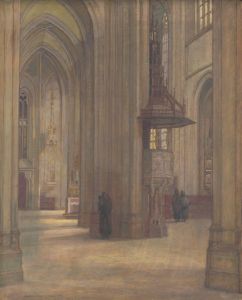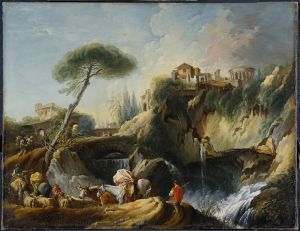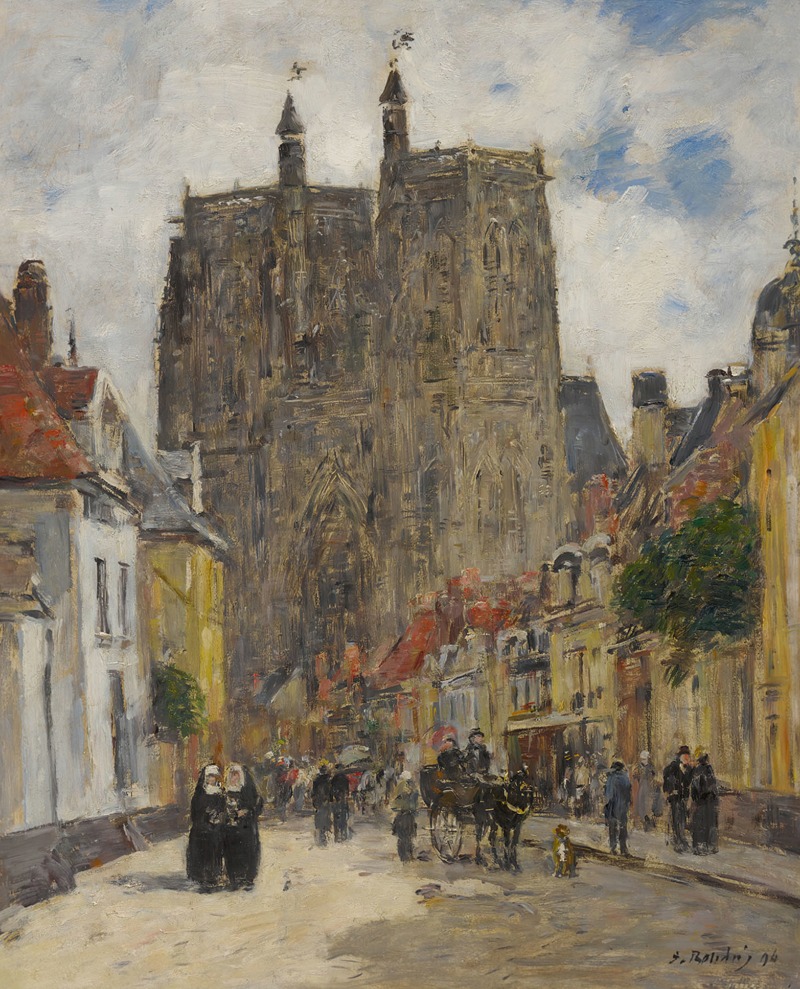
Abbeville, Rue Et Église Saint-Vulfran
A hand-painted replica of Eugène Boudin’s masterpiece Abbeville, Rue Et Église Saint-Vulfran, meticulously crafted by professional artists to capture the true essence of the original. Each piece is created with museum-quality canvas and rare mineral pigments, carefully painted by experienced artists with delicate brushstrokes and rich, layered colors to perfectly recreate the texture of the original artwork. Unlike machine-printed reproductions, this hand-painted version brings the painting to life, infused with the artist’s emotions and skill in every stroke. Whether for personal collection or home decoration, it instantly elevates the artistic atmosphere of any space.
Eugène Boudin's painting Abbeville, Rue Et Église Saint-Vulfran depicts a street scene in the town of Abbeville, located in the Somme department of northern France. The artwork prominently features the Church of Saint-Vulfran (Église Saint-Vulfran), a Gothic-style church that serves as one of the architectural landmarks of the town. The church, constructed between the late 15th and early 16th centuries, is known for its elaborate façade and twin towers, which are characteristic of the flamboyant Gothic style.
Eugène Boudin (1824–1898) was a French painter renowned for his landscapes and seascapes, often capturing scenes of everyday life in the towns and coastal areas of France. He is considered one of the precursors of Impressionism due to his focus on light, atmosphere, and outdoor settings. Boudin frequently painted en plein air, a practice that allowed him to observe and depict the natural interplay of light and shadow directly from life.
In Abbeville, Rue Et Église Saint-Vulfran, Boudin captures a moment of daily life in the streets of Abbeville, with the imposing structure of the Church of Saint-Vulfran serving as the focal point. The painting reflects Boudin's characteristic attention to atmospheric effects, with soft, natural light illuminating the scene. The composition includes architectural details of the church, as well as elements of the surrounding urban environment, such as buildings and figures, which add a sense of scale and liveliness to the work.
This painting is part of Boudin's broader body of work, which often explored the relationship between human activity and the natural or built environment. While Boudin is best known for his coastal scenes, this urban depiction demonstrates his versatility and interest in a variety of subjects. The painting provides a glimpse into 19th-century life in Abbeville and highlights Boudin's skill in capturing the essence of a place through his use of light and composition.
The exact date of the painting is not specified, but it is consistent with Boudin's mature style, which developed in the latter half of the 19th century. The work is an example of his ability to combine architectural and human elements into a cohesive and evocative scene.





![Gate of Victory [Bab an-Nasr], and Mosque of El Hakim.](/imgs/217487/s/david-roberts-gate-of-victory-bab-annasr-and-mosque-of-el-hakim-b179ecfb.jpg)
